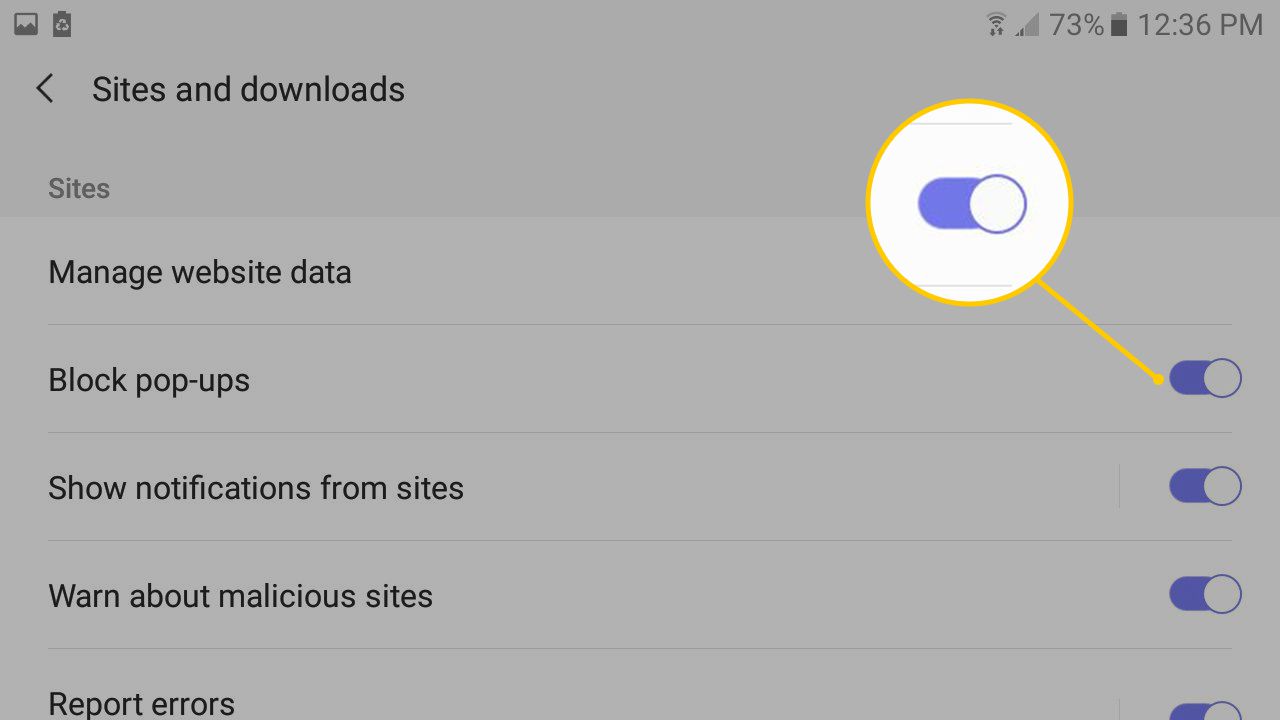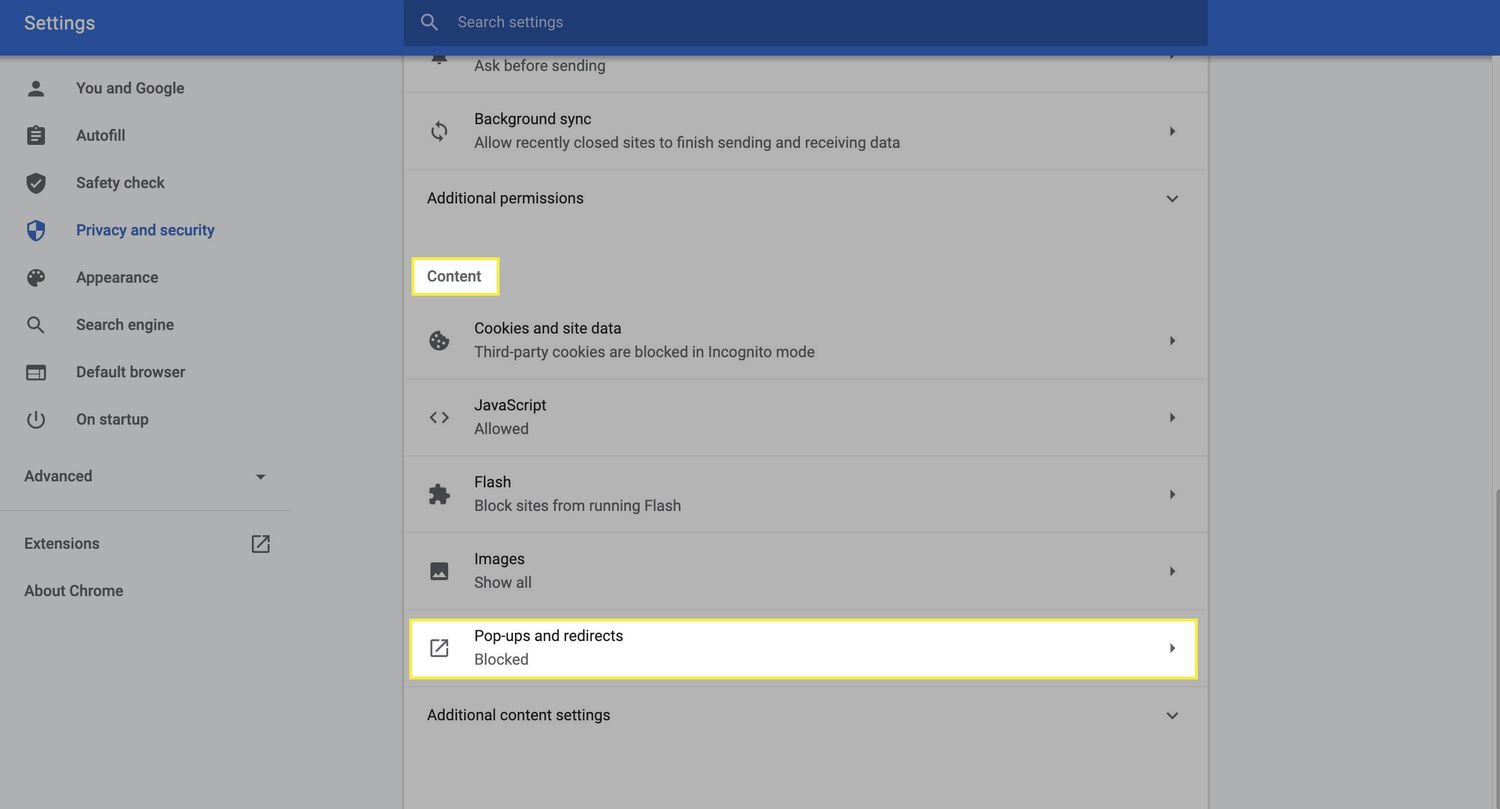Introduction
Malware, short for malicious software, can wreak havoc on your browsing experience by causing pop-up ads, redirecting your searches, or even stealing your personal information. If you're experiencing unusual behavior while using Google Chrome, such as frequent crashes, sluggish performance, or unexpected changes to your homepage, it's possible that your browser has been compromised by malware.
In this guide, we'll explore the steps you can take to rid your Chrome browser of malware and restore its performance and security. By following these methods, you can effectively combat the intrusive and harmful effects of malware, ensuring a safer and more enjoyable browsing experience.
Whether you're a seasoned internet user or a newcomer to the digital realm, dealing with malware can be a frustrating and concerning experience. However, with the right tools and knowledge at your disposal, you can take proactive measures to safeguard your browsing activities and protect your personal data from cyber threats.
Now, let's delve into the actionable steps that will empower you to identify, address, and eliminate malware from your Chrome browser, allowing you to reclaim control over your online activities and enjoy a more secure browsing environment.
Step 1: Identify the Symptoms of Malware
Before taking steps to remove malware from your Chrome browser, it's crucial to recognize the telltale signs of a potential infection. Malware can manifest in various ways, causing disruptions and anomalies in your browsing experience. By familiarizing yourself with these symptoms, you can promptly address any underlying issues and prevent further damage to your system.
Unwanted Pop-Up Ads and Redirects
One of the most common indicators of malware presence is the sudden appearance of persistent pop-up ads or unexpected redirects to unfamiliar websites. If you notice an influx of intrusive advertisements or find yourself being redirected to dubious web pages without your consent, it's likely that your browser has been compromised by malware.
Sluggish Performance and Unresponsive Tabs
Malware can significantly impact the performance of your Chrome browser, leading to sluggishness, frequent freezes, or unresponsive tabs. If you experience a noticeable decline in browsing speed or encounter difficulties in navigating between web pages, it's essential to consider the possibility of malware interference.
Changes to Homepage and Search Engine
Another red flag for malware activity is the unauthorized modification of your browser's homepage or default search engine. If you find that your homepage has been altered without your permission or that your search queries are being redirected to unfamiliar search engines, it's indicative of potential malware infiltration.
Unexplained Toolbars and Browser Extensions
Malware often introduces unwanted toolbars and browser extensions into your Chrome browser without your knowledge. If you notice the sudden appearance of unfamiliar toolbars or extensions, especially those that you did not intentionally install, it's a strong indication of malware presence.
Suspicious Network Activity
Monitoring your network activity can provide valuable insights into potential malware infections. If you observe unusual network behavior, such as excessive data usage or unexplained connections to suspicious IP addresses, it's essential to investigate further to determine if malware is the underlying cause.
By remaining vigilant and recognizing these symptoms, you can proactively identify and address potential malware infections in your Chrome browser, paving the way for effective remediation and enhanced browsing security.
Step 2: Update Chrome and Operating System
Ensuring that your Chrome browser and operating system are up to date is a fundamental step in combating malware and bolstering your system's security. Software updates often include patches and fixes for known vulnerabilities, making it essential to regularly check for and install the latest updates.
Updating Chrome
To update Chrome to the latest version, follow these simple steps:
- Open Chrome and click on the three-dot menu icon in the top-right corner of the browser window.
- Navigate to "Help" and select "About Google Chrome."
- Chrome will automatically check for updates and begin downloading any available updates.
- Once the updates are downloaded, click on "Relaunch" to apply the updates and restart the browser.
By keeping Chrome updated, you ensure that any known security vulnerabilities are patched, reducing the risk of malware exploiting these weaknesses to compromise your browsing activities.
Updating the Operating System
In addition to updating Chrome, it's crucial to keep your operating system (OS) up to date. Whether you're using Windows, macOS, or Linux, regularly installing OS updates is vital for maintaining a secure computing environment.
For Windows users:
- Click on the Start button and select "Settings."
- Navigate to "Update & Security" and click on "Check for updates."
- If updates are available, proceed to download and install them to ensure your system is fortified against potential security threats.
For macOS users:
- Click on the Apple menu and select "System Preferences."
- Choose "Software Update" to check for and install any available updates for your macOS.
For Linux users:
The process for updating the operating system varies based on the distribution being used. Consult the documentation or support resources for your specific Linux distribution to ensure that your system is kept up to date with the latest security patches and enhancements.
By diligently updating both Chrome and your operating system, you fortify your defenses against malware and other security risks, creating a more resilient and secure browsing environment.
Incorporating these proactive measures into your routine maintenance practices can significantly reduce the likelihood of malware infiltrating your system and enhance the overall security of your browsing activities.
Step 3: Use Chrome's Built-in Cleanup Tool
Chrome's built-in cleanup tool, known as "Chrome Cleanup," is a powerful feature designed to detect and remove unwanted software that may be causing issues within the browser. This tool is particularly effective in identifying and eradicating potentially harmful software, including malware, adware, and other unwanted programs that can compromise your browsing experience.
To utilize Chrome's built-in cleanup tool, follow these simple steps:
-
Open Google Chrome and click on the three-dot menu icon in the top-right corner of the browser window.
-
From the menu, select "Settings" to access the Chrome settings page.
-
Scroll down and click on "Advanced" to reveal additional settings options.
-
Under the "Reset and clean up" section, click on "Clean up computer."
-
Chrome will initiate a scan to identify any harmful software that may be impacting your browsing experience.
-
If the scan detects potentially unwanted software, Chrome will prompt you to remove the software to restore the browser's performance and security.
By leveraging Chrome's built-in cleanup tool, you can effectively address underlying issues caused by malware and other unwanted software, restoring the integrity of your browsing environment.
The cleanup tool's ability to detect and remove harmful software provides a proactive approach to maintaining a secure browsing experience. By regularly utilizing this feature, you can mitigate the impact of potential malware infections and ensure that your Chrome browser remains free from unwanted software that may compromise your privacy and security.
Incorporating the use of Chrome's built-in cleanup tool into your routine maintenance practices empowers you to take swift action against potential threats, safeguarding your browsing activities and preserving the performance and security of your Chrome browser.
By leveraging the capabilities of Chrome's built-in cleanup tool, you can proactively combat the presence of malware and unwanted software, contributing to a safer and more enjoyable browsing experience.
Step 4: Reset Chrome Settings
Resetting Chrome settings can serve as a powerful remedy for addressing persistent issues caused by malware or unwanted software. By initiating a reset, you can effectively revert Chrome to its default state, eliminating any potentially harmful alterations made by malicious entities and restoring the browser to a clean and secure configuration.
To reset Chrome settings, follow these straightforward steps:
- Open Google Chrome and click on the three-dot menu icon located in the top-right corner of the browser window.
- From the menu, select "Settings" to access the Chrome settings page.
- Scroll down and click on "Advanced" to reveal additional settings options.
- Under the "Reset and clean up" section, select "Restore settings to their original defaults."
Upon selecting this option, Chrome will present a confirmation dialog outlining the changes that will occur as a result of the reset. This includes the restoration of default search engines, homepage, new tab page, and tab settings, as well as the disabling of extensions and themes. Additionally, cookies, site data, and cached images will be cleared, and Chrome's content settings will be reset to their default state.
By proceeding with the reset, you can effectively eliminate any unauthorized modifications and potential malware-induced alterations that may have compromised the integrity of your browsing experience. This comprehensive reset not only eradicates unwanted changes but also provides a fresh start for Chrome, allowing you to navigate the web with enhanced security and stability.
It's important to note that while resetting Chrome settings can effectively address issues related to malware and unwanted software, it also entails the removal of personalized settings and data. Therefore, it's advisable to carefully review the changes that will occur as a result of the reset and ensure that any essential data is backed up or synced with your Google account to prevent data loss.
By incorporating the practice of resetting Chrome settings into your troubleshooting routine, you can proactively combat the impact of malware and unwanted software, contributing to a more secure and reliable browsing environment. This proactive approach empowers you to swiftly address potential threats and restore the integrity of your Chrome browser, ensuring a safer and more enjoyable browsing experience.
Step 5: Use Malware Removal Tools
When dealing with persistent or complex malware infections on your Chrome browser, leveraging specialized malware removal tools can provide an effective solution to eradicate the unwanted software and restore the security of your browsing environment.
Several reputable antivirus and anti-malware software offer dedicated tools designed to detect and remove a wide range of malware, including adware, spyware, Trojans, and other malicious programs that may compromise your online safety. These tools are equipped with advanced scanning capabilities and comprehensive malware databases, enabling them to identify and eliminate even the most elusive and sophisticated threats.
Before utilizing a malware removal tool, it's essential to ensure that you select a reputable and trusted software solution from a reliable provider. Conducting thorough research and consulting user reviews can help you identify a tool that aligns with your specific needs and provides a proven track record of effectively combating malware.
Once you've chosen a suitable malware removal tool, follow these general steps to initiate the malware scanning and removal process:
-
Download and Install: Visit the official website of the selected malware removal tool and download the latest version of the software. Follow the installation instructions to set up the tool on your system.
-
Update Definitions: Before running a scan, ensure that the malware removal tool's virus definitions are up to date. This step is crucial for equipping the tool with the latest information about emerging malware threats.
-
Initiate Scan: Launch the malware removal tool and initiate a full system scan. Depending on the tool's capabilities, you may have the option to perform a quick scan or a more comprehensive deep scan to thoroughly examine all files and processes on your system.
-
Review and Remove Threats: Upon completion of the scan, the malware removal tool will present a detailed report of any identified threats. Review the findings and proceed to remove or quarantine the detected malware to eliminate the malicious entities from your system.
-
Follow Recommendations: Some malware removal tools may provide additional recommendations or security measures to enhance your system's protection. It's advisable to consider and implement these recommendations to fortify your defenses against future malware threats.
By leveraging the capabilities of reputable malware removal tools, you can effectively combat the presence of malware and unwanted software, contributing to a safer and more enjoyable browsing experience. These tools serve as valuable assets in your efforts to safeguard your online activities and maintain the integrity of your Chrome browser, empowering you to navigate the web with confidence and security.
Step 6: Enable Chrome's Safe Browsing Feature
Chrome's Safe Browsing feature offers an additional layer of protection against malware, phishing attacks, and deceptive websites, enhancing the overall security of your browsing experience. By enabling this feature, you empower Chrome to proactively identify and warn you about potential security threats, allowing you to navigate the web with greater confidence and peace of mind.
To enable Chrome's Safe Browsing feature, follow these simple steps:
-
Open Google Chrome and click on the three-dot menu icon in the top-right corner of the browser window.
-
From the menu, select "Settings" to access the Chrome settings page.
-
Scroll down and click on "Privacy and security" to reveal additional settings options.
-
Under the "Security" section, ensure that the "Safe Browsing" option is set to "Standard protection."
By enabling this feature, Chrome will automatically display warnings when you attempt to visit potentially harmful or deceptive websites, providing you with the opportunity to proceed with caution or navigate away from the identified threats. Additionally, Safe Browsing actively checks the web pages you visit and files you download against a constantly updated list of known dangerous sites and files, offering real-time protection against emerging security risks.
Chrome's Safe Browsing feature leverages Google's vast database of web content to identify and flag suspicious websites and files, effectively shielding you from potential malware infections and phishing attempts. This proactive approach to web security aligns with Google's commitment to safeguarding users' online experiences and underscores the importance of integrating advanced security measures into the browsing environment.
By incorporating the use of Chrome's Safe Browsing feature into your browsing habits, you contribute to a more secure and resilient online experience. This feature serves as a valuable ally in your efforts to combat malware and protect your personal information, reinforcing Chrome's role as a trusted and secure platform for accessing the web.
Enabling Chrome's Safe Browsing feature represents a proactive step towards fortifying your browsing security, empowering you to navigate the web with heightened awareness and protection. By embracing this feature, you can confidently explore the digital landscape while mitigating the risks associated with malware and deceptive online activities.
Conclusion
In conclusion, addressing malware on Google Chrome is a critical aspect of maintaining a secure and enjoyable browsing experience. By recognizing the symptoms of malware, updating Chrome and the operating system, utilizing Chrome's built-in cleanup tool, resetting Chrome settings, employing malware removal tools, and enabling Chrome's Safe Browsing feature, users can effectively combat the intrusive and harmful effects of malware.
The proactive identification of malware symptoms empowers users to promptly address potential infections, mitigating the impact of unwanted software on their browsing activities. Furthermore, staying vigilant and recognizing the signs of malware infiltration is essential for safeguarding personal data and maintaining a secure online environment.
Regularly updating Chrome and the operating system is fundamental in fortifying the browser's defenses against known vulnerabilities and potential security threats. By ensuring that the latest patches and fixes are applied, users can reduce the risk of malware exploiting weaknesses within the browser and the underlying operating system.
Chrome's built-in cleanup tool serves as a valuable asset in detecting and removing unwanted software, including malware and adware, thereby restoring the browser's performance and security. By leveraging this feature, users can proactively address potential threats and maintain the integrity of their browsing environment.
Resetting Chrome settings provides a comprehensive solution for eliminating unauthorized modifications and potential malware-induced alterations, offering a fresh start for the browser and enhancing its security and stability. While this action entails the removal of personalized settings and data, it serves as a powerful remedy for addressing persistent issues caused by malware or unwanted software.
The use of reputable malware removal tools equips users with advanced scanning capabilities and comprehensive malware databases, enabling the detection and elimination of even the most elusive and sophisticated threats. By leveraging these tools, users can effectively combat the presence of malware, contributing to a safer and more enjoyable browsing experience.
Enabling Chrome's Safe Browsing feature represents a proactive step towards fortifying browsing security, empowering users to navigate the web with heightened awareness and protection. By leveraging this feature, users can confidently explore the digital landscape while mitigating the risks associated with malware and deceptive online activities.
Incorporating these proactive measures into routine maintenance practices empowers users to take swift action against potential threats, safeguarding their browsing activities and preserving the performance and security of their Chrome browser. By embracing these strategies, users can navigate the web with confidence, knowing that they are equipped to combat malware and maintain a secure and resilient browsing environment.

























